The on-camera lens of 2500 has a focal length range from 37mm to 111mm (35mm equivalent). While this range is sufficient for common situations, the wide end (i.e., 37mm) may not be wide enough to include more area from the scene and the tele end (i.e., 111mm) may not be long enough to extract a portion from the scene. For many other cameras in the Coolpix series (e.g., 950, 990, 995, 4500 and so on), we can use Nikon's and a number of third party wide angle and/or telephoto converters. However, a lens converters usually has a thread in the rear end to be used for screwing on to the on-camera lens (below left). Unfortunately, this is impossible because the 2500 has no thread on the lens.

|
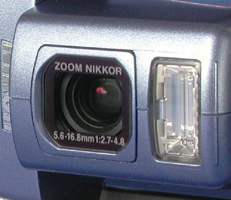
|
But, don't panic. We still can use lens converters just like the use of filters. We just hand hold a lens converter in front of the on-camera lens! However, we must be very careful about the following few important issues:
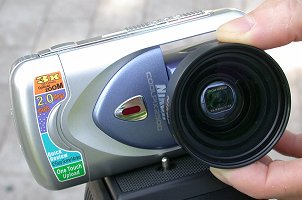
Lens converters are marked with its power in a form of 0.5X. There are two types of lens converters in general. Those with a power less than 1X are wide angle converters and those with a power greater than 1X are telephoto converters. The combined focal length (of the 2500 on-camera lens and a lens converter) is the product of the power of the lens converter and the focal length of the on-camera lens being used. For example, suppose we intend to use a 0.63X wide angle converter with the 2500. Since the on-camera lens has a focal length range of 37mm and 111mm, the combined focal length will have a range of 23mm=0.63×37mm and 70mm=0.63× 111mm. However, when using a wide angle converter, the on-camera lens is usually set to its widest end (i.e., 37mm). On the other hand, suppose a 2X telephoto converter is to be used with a 2500. The combined longest focal length becomes 222mm=2×111mm. In this case, the on-camera lens is usually set to the longest end (i.e., 111mm).
The above calculation is a theoretical one. The lens converter projects an image onto the on-camera lens. If this projected image is larger than the area that the on-camera lens can see, then the recorded image would be a good one. On the other hand, if the projected image is not large enough, the corners of the recorded image may have shadows (i.e., the image of the converter lens' back end) as shown by the left image below. If the projected image is significantly smaller, the recorded image may be a circle (below right).
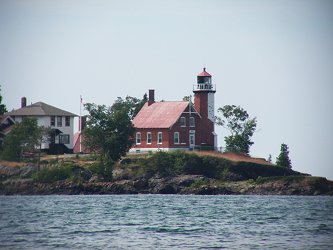
|
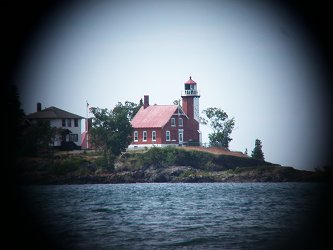
|
Since the 2500 has no dedicated lens converters, it is unlikely that we will be able to find a lens converter whose projected image matches 2500's on-camera lens. Consequently, we are looking for lens converters that project a larger image onto the on-camera lens. This means 2500's on-camera lens only sees a portion of the projected image, and, as a result, the actual combined focal length of a wide angle (resp., telephoto) lens converter will be slightly larger (resp., smaller) than the calculated one. Therefore, do some tests before you buy.
The left image below was taken by setting the on-camera lens to 37mm, the widest end, while the right image was taken by hand-holding a 0.63X wide angle converter in front of the lens. As you can see, the coverage of the 0.63X wide angle converter is larger than that of the on-camera lens.
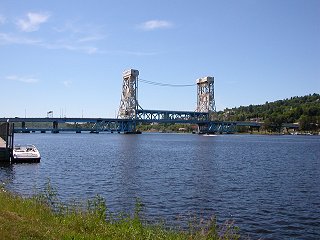
|
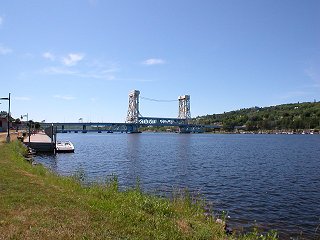
|
| Click on the image to see a larger one | |
The left image below was taken by setting the on-camera lens to 111mm, the longest end, while the right image was taken by hand-holding a 2X telephoto converter in front of the lens.
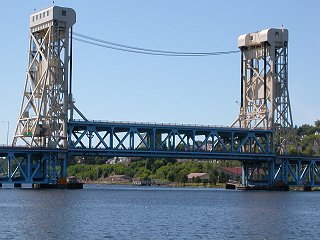
|
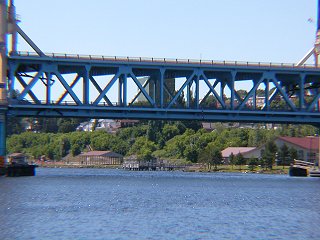
|
| Click on the image to see a larger one | |
In general, all Nikon converters, from fisheye to 3X, can be used with the 2500 by hand holding. However, for those heavy ones such as Nikon's 2X and 3X converters, hand-holding it in front of the 2500's lens is quite challenging.
You may carry a monoscope or binocular when you travel. They can also be used as lens converters with the same principle. The left (resp., right) image below shows hand-holding a monoscope (resp., binocular) in front of 2500's lens.
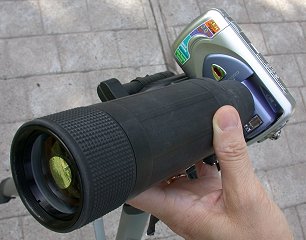
|
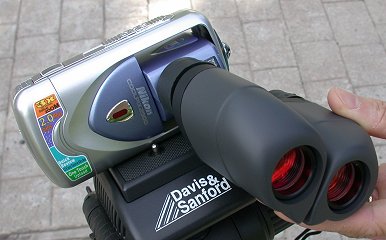
|
| A 14X monoscope | A 8X binocular |
The first image below is taken with focal length 111mm, the longest end of the on-camera lens, the second one used a 14X monoscope, and the third used one tube of a 8X binocular. It appears that the 14X monoscope produced a quite acceptable image, while the image produced by the 8X binocular is a little soft. However, this may be due to hand shaking!

|
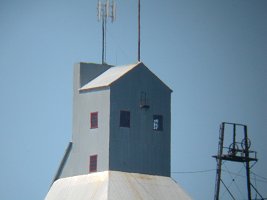
|
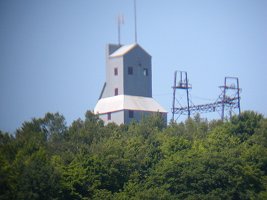
|
| On-camera lens @ 111mm | With 14X monoscope | With 8X binocular |
| Click on the image to see a larger one | ||
The following is one more example. The left image was taken with the on-camera lens set to 111mm and the right one used a 14X monoscope.
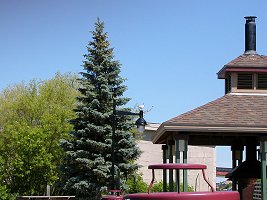
|

|
| On-camera lens @ 111mm | With 14X monoscope |
| Click on the image to see a larger one | |